|
Last year I made a trip to the Benedictine abbey of St. Paul im Lavanttal, Austria. The abbey houses two important medieval vestments. The friendly monk on duty was happy for me to take pictures without flash. Unfortunately, upon returning home, the first 30 or so pictures were lost during the transfer from my camera to my computer. Luckily, I am going to visit these beauties again in the next couple of days! And, as only the first pictures were lost, I can introduce you to the younger of the two pieces: a beautiful cope from the 13th century. Although these pieces are now housed in an abbey in Austria, they were originally made for the Benedictine abbey of St. Blaise in the Black Forest (Germany). During the dissolution of the monasteries in Bavaria in 1806, the abbot moved his convent and the treasure to St. Paul im Lavanttal and thus preserved them. Amongst the treasure were three medieval vestments: a cope from the 12th century (now in St. Paul), a cope from the 13th century (also in St. Paul) and a chasuble from the 13th century (now in the Österreichische Museum für angewandte Kunst in Vienna). The cope from the 13th century is stitched with silks and gold threads. The main stitches used on the cope are long-armed cross-stitch and brick stitch for the silk and couching for the gold threads. However, details are also worked in other surface stitches like chain stitch and split stitch. The silk used for the brick stitch is untwisted, but looks softly twisted and thicker for the long-armed cross-stitch. Originally, no linen background fabric showed; the whole cope was covered in stitches! During conservation, it became clear that the cope had been sown together from loom-width strips of linen before the stitching commenced. Depicted on the cope are the hagiographies (legends of the saints) of St. Blaise on the one side and St. Vincent of Saragossa on the other. Both saints were the patron saints of the abbey church. Scenes of the hagiographies are depicted as medallions as would have been the norm for stained glass windows in the 13th century. Each scene is accompanied by a few words to aid identification. There are two possibilities regarding the maker of this excellent piece of medieval embroidery in the 13th century. It is quite possible that the cope was stitched by the monks of the abbey of St. Blaise. But it is equally possible that this cope was stitched at a professional workshop. Either way, it is highly likely that the person who made this was a man rather than a woman. A fact I love to "share" with male visitors to the Pilatushaus who exclaim that my stitching is a "mere female past-time they are thus not interested in" :). Who provided the capital needed to produce these 'top-end' liturgical vestments? The St. Blaise abbey belonged to a reform movement in the Benedictine tradition. A movement highly endorsed by the nobility. Not only were many of the monks of noble birth, but noble families would endow the abbey with cash, lands, rights and works of art. These vestments were far costlier than the golden monstrance on the altar. Not only were the materials needed to stitch one quite costly, the countless man hours invested made the end-result VERY expensive. Another 'fun fact' for my visitors at the Pilatushaus who exclaim that the price tag on St. Laurence means the piece is unaffordable. I pleasantly inform them that in the Middle Ages they, as the commoners they are, would not have come this close to such a work of art :). Oh, you should see their faces! Truly priceless :). If you are ever in the area, do visit St. Paul! They have many embroidered liturgical vestments on display. Everything is quite well lit so that intricate details are visible. Essays on the art historical background of the pieces and the conservation of two of the three pieces can be found in: Braunsteiner, M. & H. Kaindl (1998): Historische Textilien aus dem Sakralbereich (=Schriften zur Kunst- und Kulturgeschichte des Benediktinerstiftes Admont, Band VII), ISBN 3-901810-02-1.
3 Comments
Thanks to all who have written encouraging comments on last week's blog post regarding my first successful art exhibition! As you can probably imagine, I am still mulling it all over. Getting rid of self-limiting beliefs I have held dear for nearly 28 years can't be done overnight. And isn't easy either. At least I can pinpoint with ease where my 'I am not an artist' belief comes from. It was firmly ingrained by my first art teacher in college. I've never quite understood why he disliked (or was it even hate?) me so much. But I turned from a very creative kid into somebody who focussed on perfecting techniques instead. Not only did he tell me to my face and in front of all my classmates that my drawing or painting was shitty, he would even tear it up. Now that's a real confidence booster... Unfortunately, nobody was either able or willing to protect a sensitive 12-year-old from such a bully. He told my mother that he treated me the way he did because I should not think that I had what it takes to go to Art School. Never mind that I had never ever thought of going there in the first place. Fellow teachers I asked for help were merely telling me that art wasn't important enough to make a fuss. Luckily, I had a very different teacher the next year and I briefly enjoyed art classes again. Unfortunately, the rest of my college time I had to put up with the bully again. I skipped classes as often as I legally could and when I was there, I solved crosswords instead. And the rest is history. I became a scientist but wasn't happy as I did not fit the system. When I decided to quit and try to be a craftswoman it took till last week to see I was sending a mixed message. And that made a mess. Time to clean it up. I am aware that this might alienate people as they don't understand, but that's a risk I am prepared to take. Life is too short and very precious! To end this blog post on a lighter note: the cats. As I am working on two projects at the moment, I've set up two frames. When I came into the studio this morning, both chairs were already occupied. Luckily, I was allowed to sit on one of them after breakfast. Sammie needed to harass some dragonflies and bring me one as a present (no worries, it was undamaged and released into the garden). Unfortunately, this is what happened during my lunch break: What was I to do? As a good cat-mum, I just couldn't shoo either one of them from their respective chairs and resume working on either embroidery project. That's just not done and would disregard the Geneva Convention on the proper treatment of cats. Instead, I decided to sit behind my laptop and write a blog post :).
Last weekend, I participated in a small-scale art exhibition with a painter and a sculptor. It was my first time exhibiting as an artist rather than a craftswoman. And I made some interesting observations I'd like to share with you. Especially as this art exhibition was a so much more positive experience than the usual craft fair! We promoted our exhibition through posters and flyers laid out at local shops. In addition, I promoted the event on Facebook, Instagram, my website and through my newsletter. However, the best medium to promote your event in rural Bavaria, is through a local newspaper. We were very fortunate to have two such papers taking an interest. And their articles were lovely. They even managed to take a decent picture of me! Me and my embroideries took up residence in the sculptor's atelier. Two beautiful rooms with good natural light. I was allowed to hammer nails into the walls where ever I wanted. What luxury! My embroideries where more spaced-out than what is possible at a craft fair. I was able to group similar ones together and to add proper descriptions. Besides naming the piece, I also added materials and year of creation. There was plenty of space for people to mill around and get really close to my work. I also set up my trestles with my slate frame to show a piece of silk shading as work in progress. That proved to be a clever move, as people were very interested in this technique. Our promotions had clearly worked. The day before I was setting up the exhibition, I was contacted by a buyer who didn't dare wait till the exhibition was officially open. She bought three of my pieces! During the two-day exhibition, I sold two more. In addition, I also sold a few pendants, a food cover and an embroidery kit. Much more than what I usually sell at a craft fair. And so far, I have never sold an embroidered item other than pendants, at a craft fair. Until now, I have been reluctant to call myself an artist. And I get the giggles when somebody in my presence does. But I think it is perhaps time to make the transition from crafter to artist. For starters: I've been invited on the spot to two more art exhibitions as people where so impressed by my work. These exhibitions have equal low costs for me as this exhibition had. That seems to be the biggest difference between craft fairs and art exhibitions: the costs. This one was exceptionally low: part of the costs of the flyers and two cakes. But the others are very reasonable too: cost of flyers, drinks during the vernissage (if I want such a gathering!) and 5% of my sales. You see, no sales do thus not equal disaster as it does with craft fairs. Who knew?! What I also found refreshing was the type of visitor. Yes, there were fellow stitchers and yes some made the same kind of silly remarks as they tend to do at craft fairs. But the majority were art lovers. And they are a different tribe altogether. They either like a piece or they don't like a piece. Fine by me, I can deal with that. And my new tribe was very clear about their tastes and interests: goldwork and silk shading. With copies of local painters' work in canvas (think: my interpretation of Franz Marc's tiger). And since I sold so many pieces, I need to create some more of that in the coming months. Oh joy! But first I'd like to finish my ebook on the linen vestments from Tyrol. Because attending an art exhibition does take time. And with several commissions sitting on the shelves, the ebook is unfortunately lower on the list of priorities... Nevertheless, I hope you liked my report on my first-ever art exhibition. And maybe some of you should transition from crafter to artist too? Still giggling...
Before I am going to feed you with some more embroidery eye-candy, I want to thank all readers who commented on last week's blog post. It seems to be that it is indeed possible to create these pieces on a loom and work the ends in. A picture of a woman weaving such a particular piece was posted on this topic in Mary Corbet's Facebook group. Equally, a comment with a link to a Swedish blog showed a similar piece being made on an embroidery frame. Pieces like these can thus be created by weaving or by pattern darning. That's fascinating, don't you think? One of the best places to find beautifully presented embroidery, is in the Historical Museum of Crete in Heraklion (www.historical-museum.gr/eng/). There is a small display of richly decorated Orthodox vestments. These were made at the Asomaton Monastery and look similar to the ones from the Monastery of Arkadi. Do you see the fine embroidered lettering running vertically along the embroidery on the left? That's where it says who made this particular piece. In this case: 'the present was restored by the monk Methodios and the deacon Anthimos on the 1st of October 1854. The patron was Abbot Joseph'. And then there is a whole floor (!) dedicated to the ethnographic collection. And oh joy, that is mainly textiles! The pieces themselves where lovingly displayed. But the main advantage were the detailed descriptions about them in English. The pieces were grouped according to life's rituals: religious holidays, marriage, birth, death, etc. Such a joy to read about the different textiles and their context of use! Seldom seen such a well-made exhibition. Here are some of the beautifully embroidered pieces: A richly embroidered towel, probably from Ierapetra. There were many examples of Ottoman-style embroidery and of Cretan embroidery. And last but not least, I found the above text very moving and much in line with my own drive.
As part of the 'Samt und Seide 1000-1914. Eine Reise durch das Historische Tirol' (Velvet and Silk 1000-1914. A trip through historical Tyrol) exhibitions organised by the European Textile Academy, I and my husband visited Brixen/Bressanone and Klausen/Chiusa. We were completely blown away with the high quality embroidered textiles we saw and are already planning two more trips. Unfortunately, for most of you, Northern Italy is a bit further away than our three-hour drive. However, if you are ever in the neighbourhood, do visit the two museums I am going to introduce you to further below! They are absolutely worth it. And do take a print-out of this blog with you if you are not proficient in either German or Italian, as English is not the lingua franca in Northern Italy... First up is the Diözesanmuseum in Brixen. It houses the cathedral treasure of the former Diocese of Brixen. A large part of their permanent exhibition is devoted to textiles. The oldest being from around 1000 AD! However, this museum follows the modern concept of presenting historical art as art. Descriptions of the individual objects are very meagre and only available in German and Italian. There is nothing wrong with appreciating pieces as they are and enjoying the display in front of you. However, I would have liked to have the option of getting more information. Preferably as laminated information available in the display room AND a decent catalogue to take home. After all, I like to go to museums to learn and broaden my knowledge. That said, the sheer amount of high-quality exhibition pieces gets you into textile heaven in no time. My favourite pieces were the oldest pieces. Just the idea that the Eagle Chasuble (Adlerkasel) dates to 1000 AD. It was made at the court of the Emperor of Byzantium and given to Bishop Albuin of Brixen. It was probably one of the first silken vestments which arrived in this part of Europe. Due to its great antiquity and pretty good conservational status, it is one of the most important textiles of Europe. Another highlight were these pontifical gloves dating to the 15th century. They feature email medallions from 11th century Byzantium, showing again how important this imperial city once was in medieval Christian Europe. And aren't these tiny beads made of freshwater pearls to die for? I definitely want a pair! The museum also has several 15th. century orphreys on display. These heavily embroidered gold- and silk pieces were once appliqued onto a chasuble. Look at those couched diaper patterns forming a pretty background for the holy figures. Just unbelievable that someone cut through them to make them fit onto a new vestment... Then there were 17th. century chasubles with colourful silk and goldwork embroidery. I particularly liked the one with the small and detailed flowers. Look at the iris worked in long-and-short stitch and then further embellished with tiny fly-stitches to give the speckled impression often seen on an iris. The other chasuble shows a particular style of silken laid-work with couching stitches I first encountered on an Italian piece in the Wemyss School of Needlework Archive. I think it is very colourful and pretty. Great sources of inspiration! The next museum we visited was the Stadtmuseum in Klausen/Chiusa. They have by far the better (=higher quality embroidery) textile collection and it is displayed in such a way that you can get very close to the pieces and the lighting is excellent. Unfortunately, I wasn't allowed to take pictures. I didn't know I wasn't allowed to take any, so I can at least show you an antependium, or altar cover, from the Loreto treasure. And I (and the very friendly museum wardens) hope that it will whet your appetite so that you plan a visit too. And that you will help spread the word that this museum has a textile collection of high importance. As they are a tiny museum with an equally tiny budget, they need our help. So please show them some love. But first, let me tell you a little bit more about what is called the Loreto Treasure. Maria Anna of Neuburg became queen of Spain, Sicily, Naples and Sardinia when she married king Charles II of Spain in 1690. She brought with her her confessor Pater Gabriel Pontifeser born in Klausen. He was a trusted and loyal advisor and she pledged to build him a monastery in his hometown of Klausen. The house he was born in was turned into a Loreto chapel. Queen Maria Anna, her husband and the Spanish nobility gave beautiful religious objects to the chapel. The Loreto treasure was born. Permanently on display in the museum are several highly decorated altar covers. Apart from the one displayed above, which was probably stitched in Sicily, there is a further piece stitched in wool on linen and a silk- and goldwork piece in the Ottoman-style. Interestingly with the piece I was able to photograph, the main part with its flowers, birds and butterflies is stitched with long-and-short stitch. However, the border shows the same laidwork technique as seen before on the chasuble in the Diözesanmuseum Brixen. Besides silk and gold threads, the piece is adorned with red coral beads. This piece is truly to die for! It is very seldom that you encounter embroidery of such high quality that has kept so well. Other spectacular pieces were several chasubles with the same high-quality silk and goldwork embroidery. If you are ever near, this is a museum not to be missed! I for my part, will be back to study these pieces in greater detail.
Happy start of the week dear reader! I am back from a week full of wonderful sight-seeing with my family. And one of the sites we visited was the Bauernhofmuseum in Illerbeuren. A pretty open air museum showcasing farm life from the Swabia area of Germany. And of course, there was some lovely embroidery on display as well. Mostly on household linens and mainly involving monogramming and whitework embroidery. How about these gorgeous Richelieu embroidered curtains featured in an inn? In between family commitments, I sneaked in enough embroidery moments to complete my next broderibox project. The broderibox is a monthly embroidery threads subscription put together by the lovely people of Nordic Needle. This month's box contained: five embroidery threads, beads and a purse clasp. Since the threads had a lot of browns in them; an ant sprang to my mind. Lucky for me, the amazing Millie Marotta has drawings of ants included in her colouring-in book 'Wild Savannah'. As many of you probably know, canvaswork or needlepoint embroidery is stitched front to back. Or: object first, background later. Now be good and do not ever do that with your silk shading ;)! So, in this case, I started with my ant. She is called Truus de Mier, by the way. A favourite ant from a children's tv-show in the Netherlands. For Truus' body, I used a variegated perle #8 by Valdani. I really wanted to try this brand of embroidery threads. It worked a treat! No 'typical-low-grade-Eastern-European-Quality' here. As I wanted Truus to have a little 'body' to her body, I used the raised spot to fill it. As this stitch required me to pass 8-times through the same hole, I expected the thread to wear beyond pretty. But it didn't. They surely do know how to produce a fine perle in Romania! Next up were Truus' legs. I stitched them in tent stitch and used both directions for different legs. This made the whole thing a little less tangled-up when legs crossed. The legs were stitched using Vineyard Silk shimmer. It is a silk thread with a shimmering filament added. It does not have a nice feel and it unfortunately stitched accordingly. A bit disappointing as I really liked the previous 100% silk threads by Vineyard Silk! Apparently, ants have segmented legs that start with a bit of a bulky part. And ants have a mouth piece with which they cut leaves in handy transportable portions. Since this month's broderibox had a violet Londonderry linen thread in it, I decided to use it to stitch these parts in cross-stitch. Lovely thread! I do stitch some whitework embroidery with linen threads and really love it. That's Ms Truus de Mier sorted. On to the background. I decided to stitch the earth on witch Truus walks with Silk Lame Braid by Rainbow Gallery. Despite it being a silk thread mixed with metalized polyester and some rayon, it felt and stitched fantastically. Very well suited for the vertical Parisian stitch. As the variegated cotton thread Watercolours by Caron had some blue in it, that was going to be turned into the sky. I separated the three plies and stitched the diagonal Cashmere stitch with one ply. I really love these cotton threads by Caron! They are so soft and hold up so well whilst stitching on canvas.
To finish my Truus de Mier, I decided that she needed a bright green stumpwork leaf. I wired a piece of dupion silk backed with calico. The buttonhole edging was stitched using a #12 House of Embroidery perle from my stash. I added the Mill Hill magnifica beads provided in the broderibox to my leaf. Subsequently, I stitched a few beads onto Truus for an eye. And that's another broderibox project finished satisfactorily! P.S.: Us dummies did take the camera with us to the Bunter Markt craft fair in Wessobrunn on Sunday, however, we forgot to take a picture of our stand... On the up-side, we did manage to sell two pendants and shed a few flyers and business cards! Me and my husband had a wonderful time visiting London and Salisbury. I bought some lovely silks at the Silk Society and browsed the speciality threads and beads at the London Bead Company. However, we both enjoyed our trip to the Victoria & Albert Museum with the Opus Anglicanum exhibition the most. As not all my readers are in the luxury position to hop over to England to visit this outstanding medieval embroidery exhibition, let's review the excellent exhibition catalogue! The exhibition catalogue 'English Medieval Embroidery Opus Anglicanum' weighs in at a staggering four pounds, has 310 pages with many (and I really mean MANY) high quality pictures. In my opinion, the pictures are the real gem of this catalogue. Not only are they so detailed that you can see the individual stitches, they are also much better in conveying the detail and the vividness of the embroideries than the originals in the exhibition. Because, as always, ancient textiles need protection form light and thus the levels of lighting in the exhibition are nowhere near to those used when they photographed these objects. In addition, many more objects are illustrated in the 7 chapter's texts than were present in the exhibition! Especially those residing in other parts of the world. So who knows, maybe you are living near to one of these gems and you could easily go for a visit! The first chapter details the technical part of the Opus Anglicanum embroidery and when it was in use. It describes the silk split stitching of the figures and the underside couching of the gold threads for the background. I was most surprised to read that medieval gold thread makers were able to make gilt passing only 0.25-0.30 mm thick! The second chapter describes the use of the different embroidered vestments in the Roman Catholic church. It pinpoints Opus Anglicanum embroideries held in museums and churches ranging from Hildesheim in Germany, Vienna in Austria to Chicago in the US. This diaspora has helped the survival of these medieval embroideries after the Reformation. The lives of London embroiderers and the details of their trade are described in the third chapter. Interestingly, in the older records from the 13th and 14th century, women make up the majority of the work force. Then men start to push them from the documentary record. Maybe this had something to do with the craft becoming better organised and the establishment of a guild? A surviving bill shows that women embroiderers were paid far less than men... Chapter four shows that English embroideries were very popular with the papal curia in continental Europe. Examples can be found in the Cathedral treasuries and museums of Italy and Spain. However, by the 14th century, Opus Anglicanum starts to become less fashionable and embroideries from Italy take over. The fifth chapter places the art form of embroidery in a wider artistic context. Many parallels between paintings and embroideries are illuminated. Whereas chapter six looks at the changing embroideries on vestments dating from the second half of the 14th century up to the Reformation. The trade becomes more fragmented with prospective buyers assembling the parts of vestments from different sources. Embroidery is increasingly appliqued onto a background. I best enjoyed the seventh chapter which placed the English embroideries into a wider mainland European context. This greatly enhances my knowledge of embroidery on medieval vestments; particularly from more central European countries like the Czech Republic. The remaining part of the book is devoted to a thorough catalogue of all the pieces in the exhibition. Beautiful detailed pictures provide a rich banquet of eye candy! The best of the best? The Toledo cope from AD 1320-30 covered all over with saints, scenes of the life of the Virgin and wonderfully detailed birds. This is my absolute favourite; don't you agree? The catalogue is widely available through online sources like the V&A shop and comes at a price of 35 GBP or about $ 75. And then there is another brand new book on the topic, also available from the V&A: The age of Opus Anglicanum. It contains nine scientific papers on the subject, mainly written by the people who also contributed essays aimed at the general public to the exhibition catalogue. I haven't read it yet, but if you are also, like me, interested in a more thorough covering of the subject, this might be worth its 89 GBP or $ 143. However, the quality of the pictures is much better in the catalogue. More interesting however, is its promise written on the inside sleeve: 'This volume, the first to appear in a series on English Medieval Embroidery...'. Yeah, bring them on good people of the V&A!
So, for a number of you, my dear readers, it is now time to prompt Santa to make sure you find a copy of the exhibition catalogue under your Christmas tree :). On a more personal note: sadly, upon our return from England, my husband was told that the company he works for closes its archaeological department. Not the sort of Christmas' present we wished for, I can assure you. As I now help him in finding a new job, it will undoubtedly impair on the time I can spend on my own embroidery endeavours, but I will try to keep my weekly blog posts upright! Autumn has truly arrived in this part of the world. No more summer dresses or breakfast on the balcony. Alas, the rainy weather is perfect for a little stitching. Or, for coming with me on a virtual trip. Pour yourself a cup of tea, raid the biscuit tin and enjoy! Since a couple of months, Mindelheim boosts a textile museum housed in the spectacular building of the Jesuit College. Being such a new museum, the whole collection is excellently lit by LED-technology. Not only can you actually see the individual stitches, you can even take decent pictures. And that's exactly what I did as the museum is so new, they don't sell a catalogue. The textile museum starts with a nice timeline display of fashion. Then there is a room with fashion accessories like fans, bags and gloves. Many of which sport some form of embroidery. Past the fashion displays, you land in a set of small rooms filled with different types of embroidery and (needle)lace. The museum collection is tilted heavily in the direction of whitework and lace. Not a bad thing at all, just something to keep in mind. Another display has a number of exquisite samplers. And then there is a nice little display filled with silk embroidery and goldwork. Especially the samplers and the unfinished work is really practical if you want to study this particular technique. Intersperced between the displays, are single works of embroidery. Some of really high quality, others more of the leisurely type. There are also a number of Chinese embroideries on display. After the embroidery displays, you'll enter the lace rooms. There are fantastic (and huge!) examples of needlelace. They even have a large cupboard with drawers where smaller items are stored. Pulling out the different drawers is very rewarding. So many excellent pieces. And some of the pieces even have a royal connection!
If you are ever in the area, do visit this gem of a museum. You can even bring your menfolk as the archaeology museum and the art museum are housed in the same building. Still afraid that they might bore themselves? Store them at one of the many cake shops lining the streets of this medieval town! By change I stumbled upon an exhibition in a former convent of the order of the Visitation of Holy Mary: Kloster Beuerberg. As this particular order lives in strict enclosure, it is rare that you can visit one of their houses. Since the last sisters left a couple of years ago, not much has changed. The house now belongs to the diocese and they decided to, for the time being, turn it into a museum. Throughout the exhibition, you will find lovely examples of all sorts of needlework executed by the sisters. Culminating in the display of the 'Angels Ornate'. Definitely the best part of the whole exhibition were the cope, chasuble and dalmatic of the 'Angels Ornate'. Beautifully executed vestments with silk and goldwork embroidery in the most vivid colours. Although made around 1880, they still look fresh with none of the usual wear and tear. Eye candy in its purest form. I will probably visit the exhibition again as there was so much to see. They also sell fabric, used linens (monogrammed), yarn, threads, buttons etc. from the former vestment workshop. A few weeks ago, I visited a most spectacular exhibition at the Catherijneconvent, Utrecht, Netherlands. From their own collection and from the collections of other museums, convents and churches, they had brought together the largest exhibition on medieval paraments I have ever seen. Copes, chasubles and dalmatics were exhibited free standing on a dais so you could have a good look without being hindered by glass. Lighting levels were however still kept modest. Since only the best was good enough for God, medieval paraments were made of the most expensive fabrics finely embroidered with gold thread and silks. This meant that only the rich could afford to pay for them. One such a lucky bastard (literally: he was the illegitimate son of Philip the Good) was David of Burgundy, bishop of Utrecht from AD 1456-1496. Especially for the exhibition, the golden set of a cope, chasuble and two dalmatics donated by David to the St. Jan church of Utrecht was displayed together again. You couldn't tell that these pieces were more than five centuries old! And isn't this a delightful example of late mediaval embroidery? The silk embroidery on Christ's face and hair is so expertly done. Unfortunately, the level of lighting was particularly low in this part of the exhibition. This is a detail of a cope shield from AD 1520 depicting the resurrection. From a completely different quality is the above detail of a late 15th century chasuble. The angel is far less detailed and the gold threads are of a lesser quality. Hence they lost their lustre and became oxidized. After all, not everybody was a rich enough bastard like lucky David.
For those of you who missed the exhibition or simply lived too far away, the exhibition catalogue is a gem. More than 270 pages of embroidery goodness with many detailed photographs and a whole chapter on embroidery techniques by master embroideress Ulrike Mülners. Don't be put off by the fact that the book is in Dutch; the pictures will do the talking. Although I do agree that standard works shouldn't be written in such an obscure language like Dutch. Note: the book is now out of print but can be found second-hand online. In the coming months, I will show you more pictures of this exquisite exhibition. However, with the show at Osnabrück a mere four weeks away, I am up to my neck into writing tutorials, ordering materials and packing kits. See you next week after a short break in Vienna where my path hopefully crosses more gold threads... Literature Leeflang, M., Schooten, K. van (Eds.) (2015): Middeleeuwse Borduurkunst uit de Nederlanden. Zwolle: WBOOKS. |
Want to keep up with my embroidery adventures? Sign up for my weekly Newsletter to get notified of new blogs, courses and workshops!
Liked my blog? Please consider making a donation or becoming a Patron so that I can keep up the good work and my blog ad-free!
Categories
All
Archives
July 2024
|
Contact: info(at)jessicagrimm.com
Copyright Dr Jessica M. Grimm - Mandlweg 3, 82488 Ettal, Deutschland - +49(0)8822 2782219 (Monday, Tuesday, Friday & Saturday 9.00-17.00 CET)
Impressum - Legal Notice - Datenschutzerklärung - Privacy Policy - Webshop ABG - Widerrufsrecht - Disclaimer
Copyright Dr Jessica M. Grimm - Mandlweg 3, 82488 Ettal, Deutschland - +49(0)8822 2782219 (Monday, Tuesday, Friday & Saturday 9.00-17.00 CET)
Impressum - Legal Notice - Datenschutzerklärung - Privacy Policy - Webshop ABG - Widerrufsrecht - Disclaimer

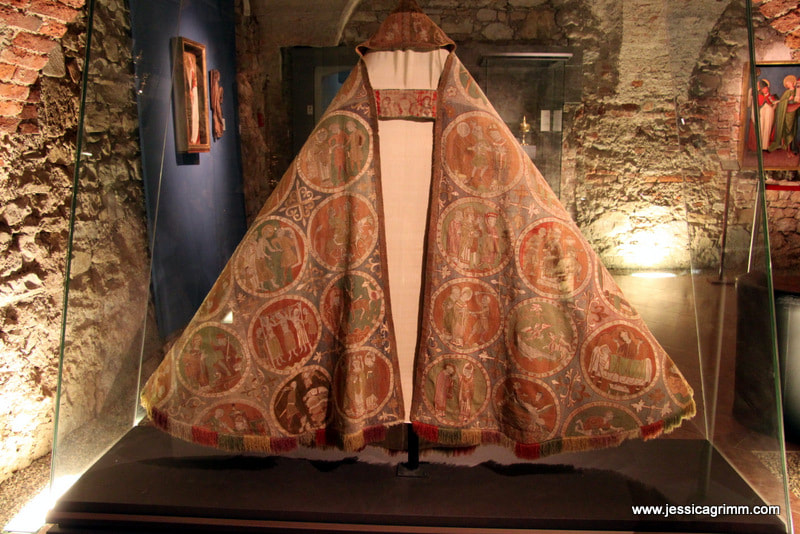
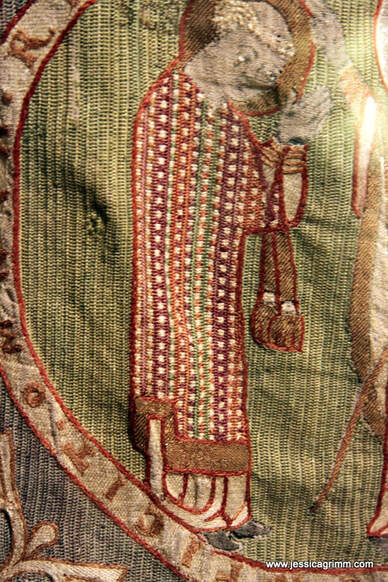
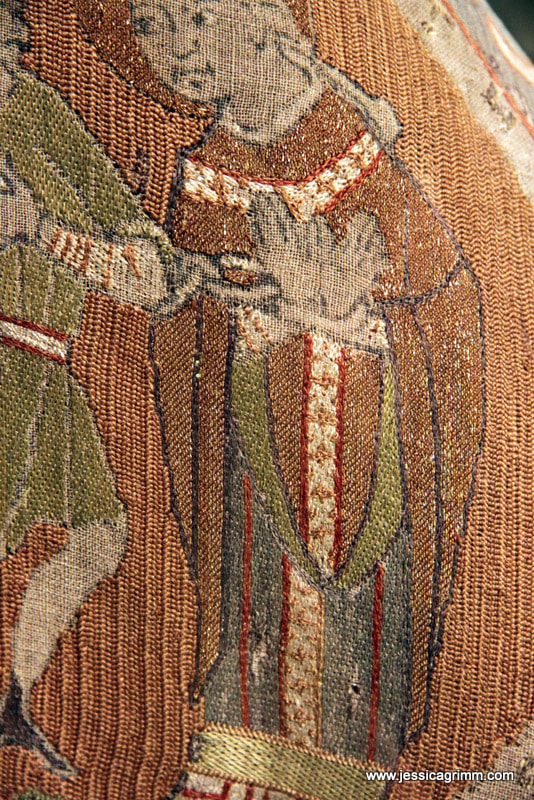
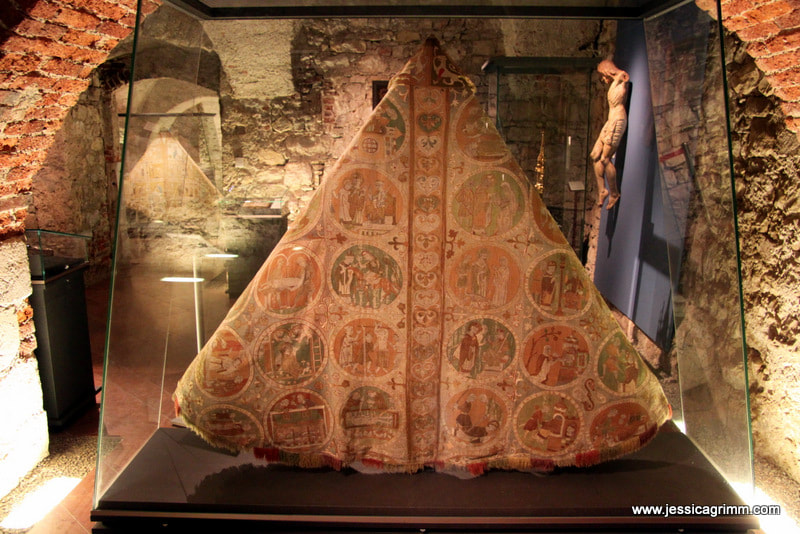
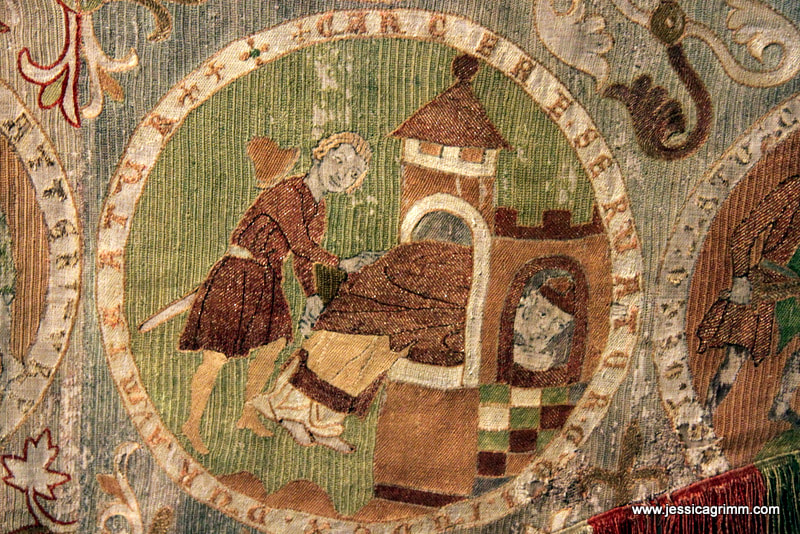
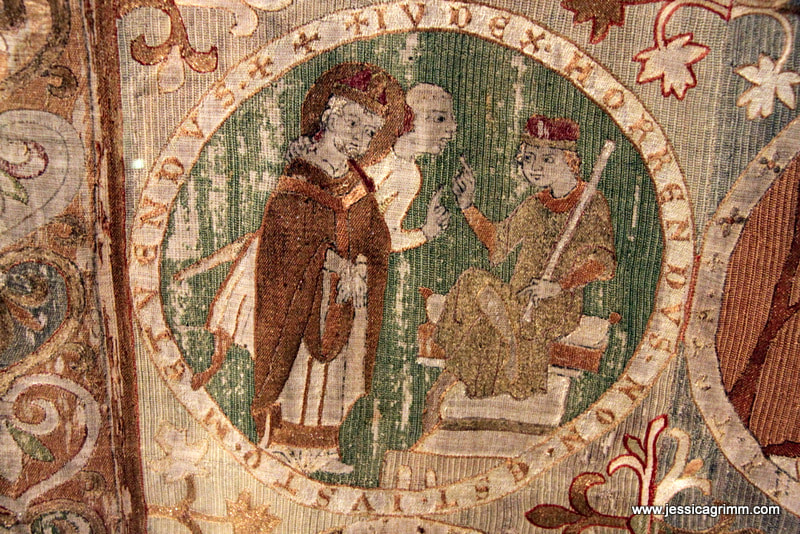
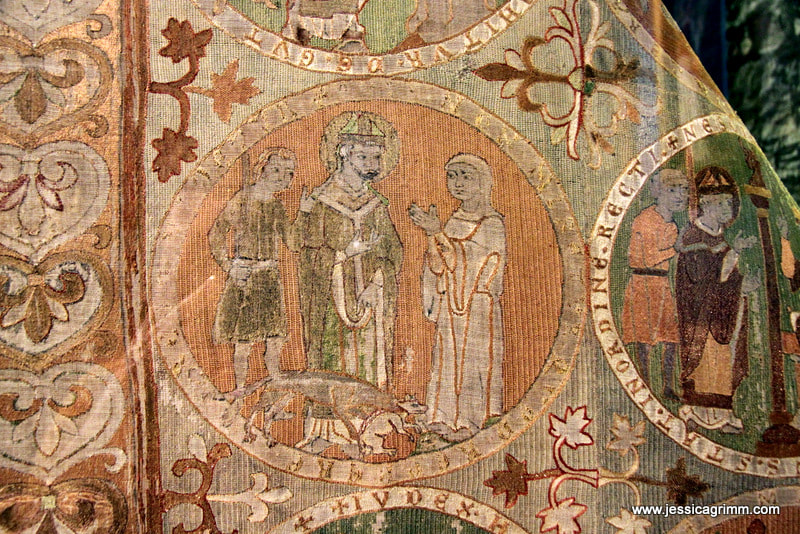
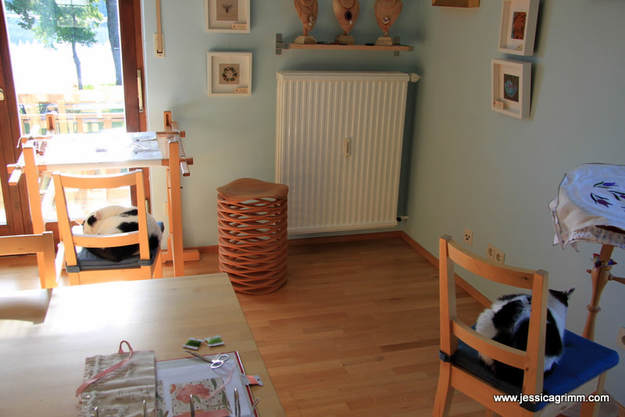
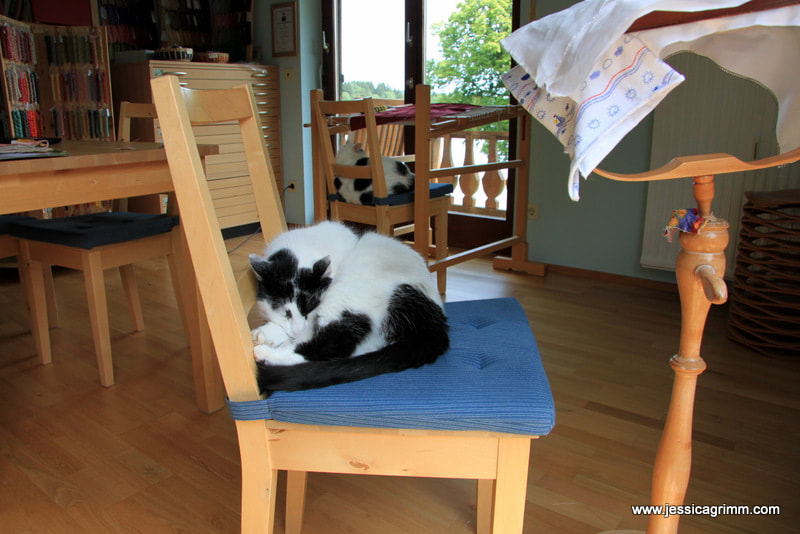
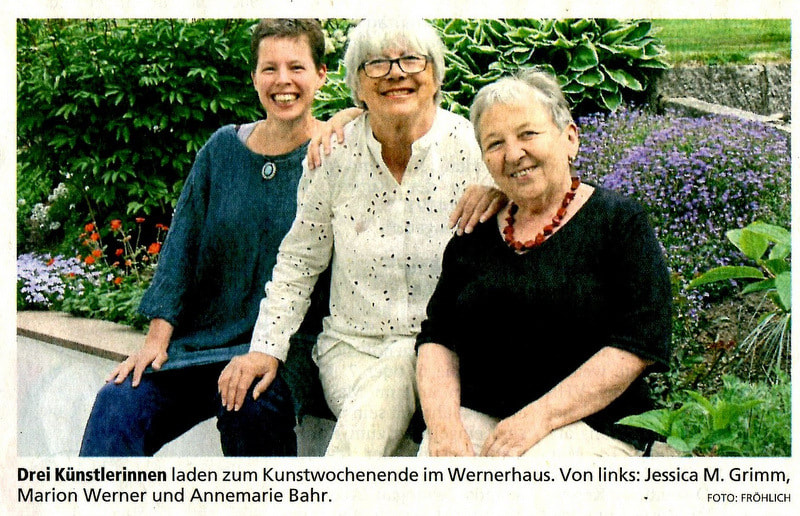
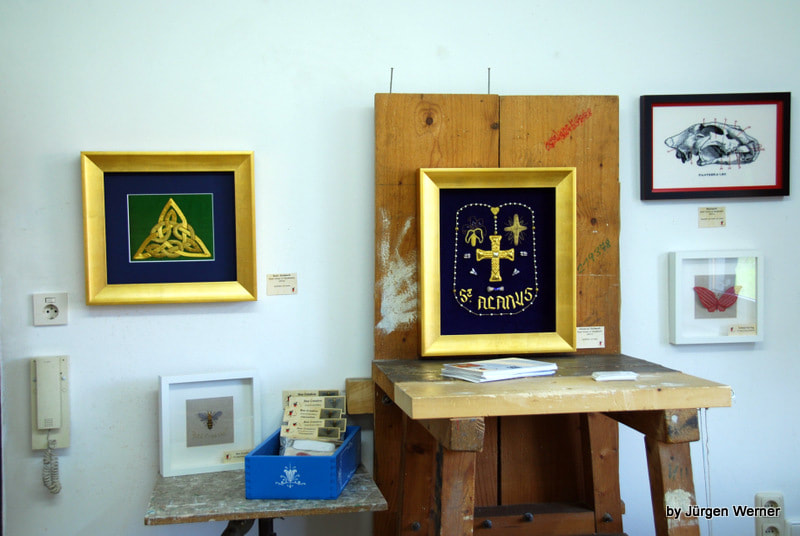
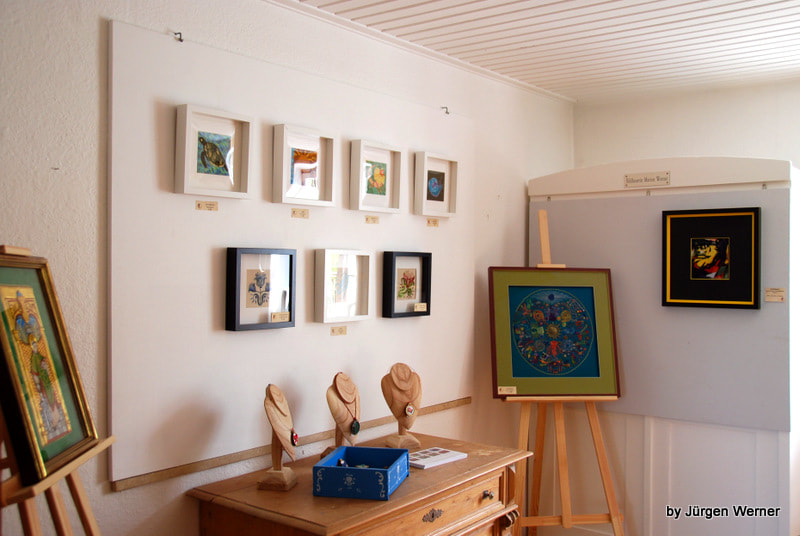
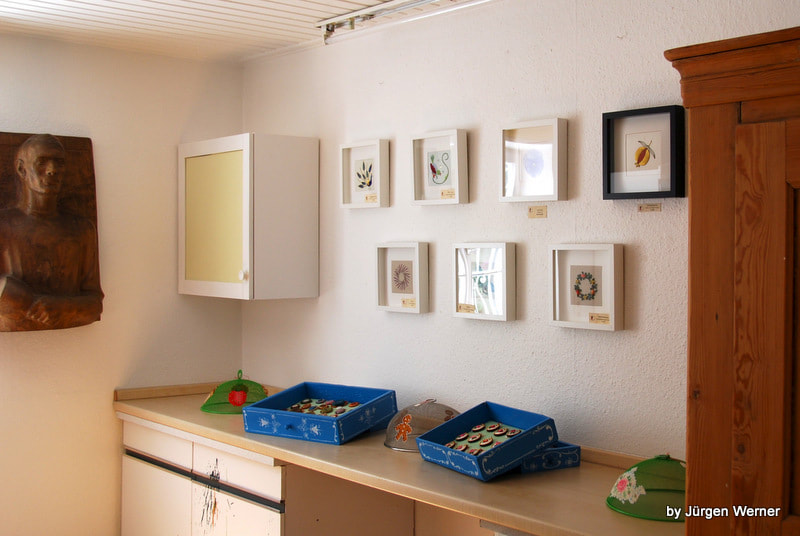
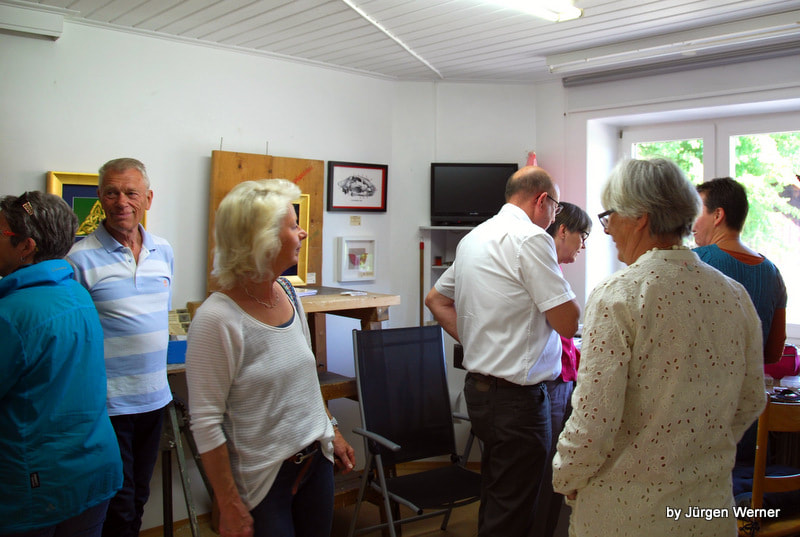
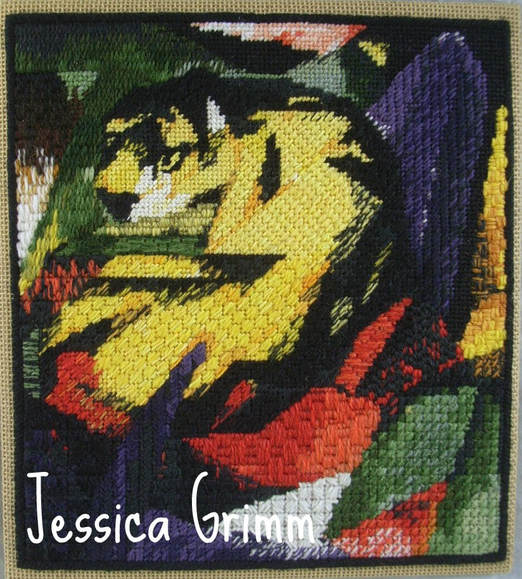
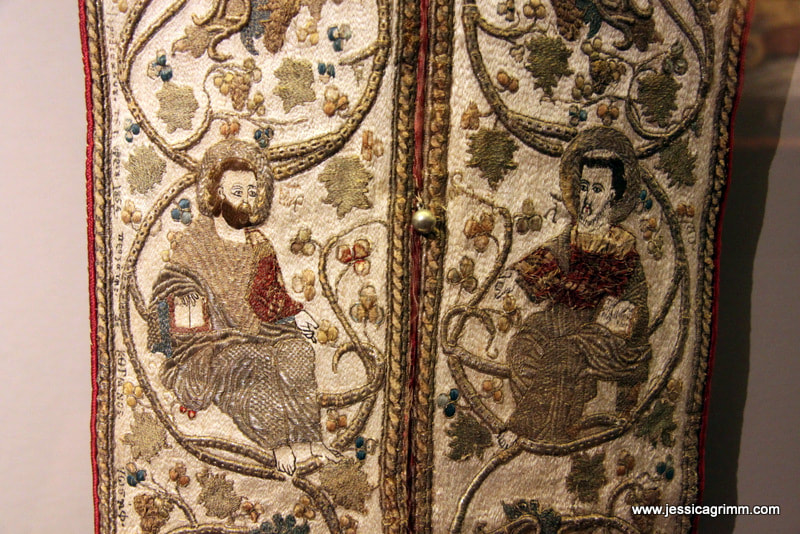
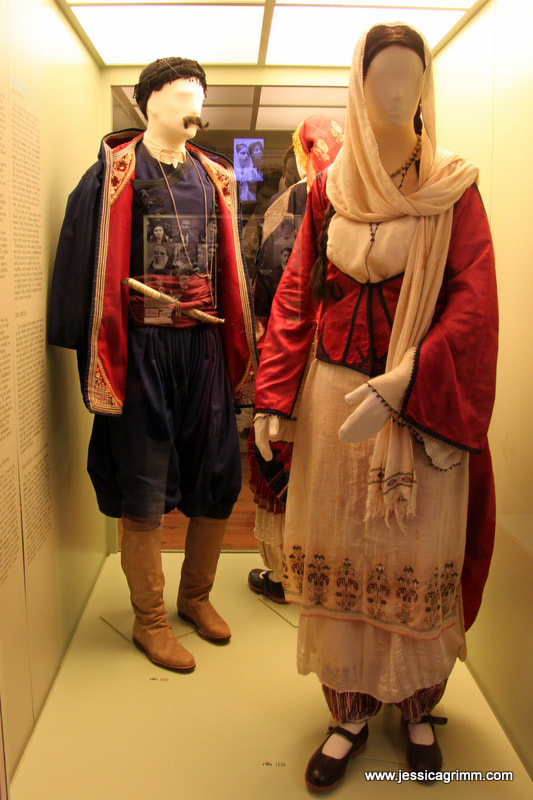
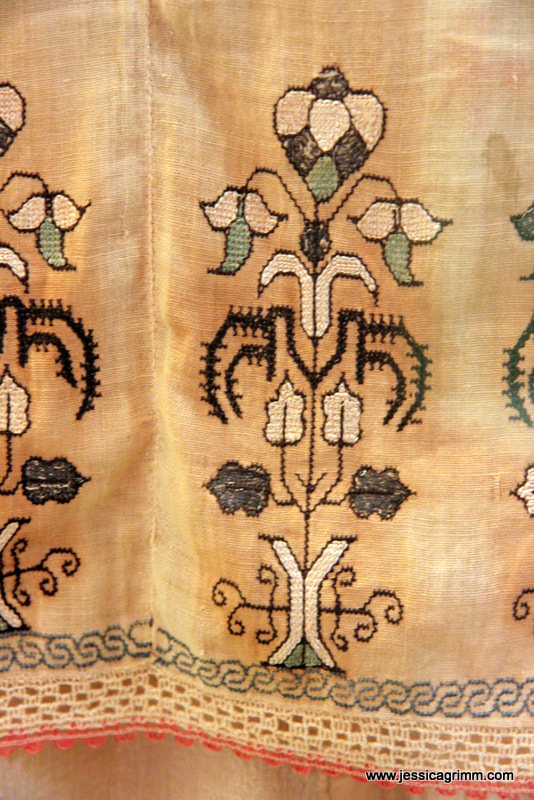
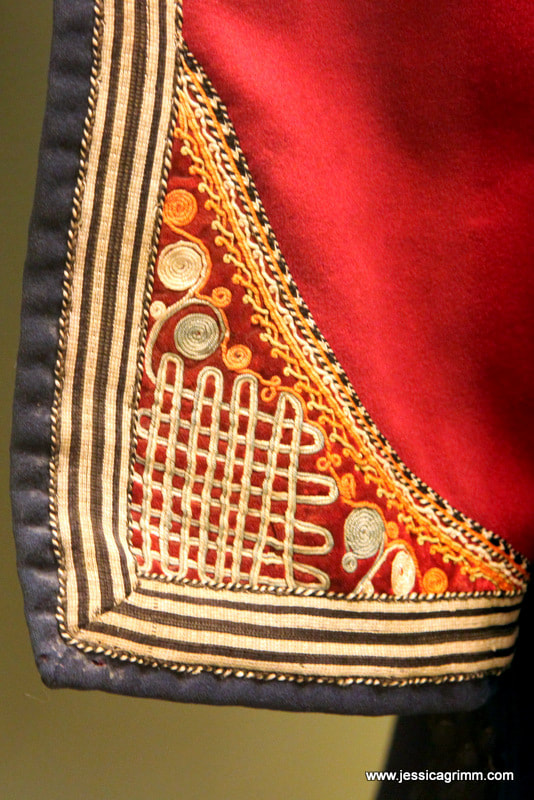
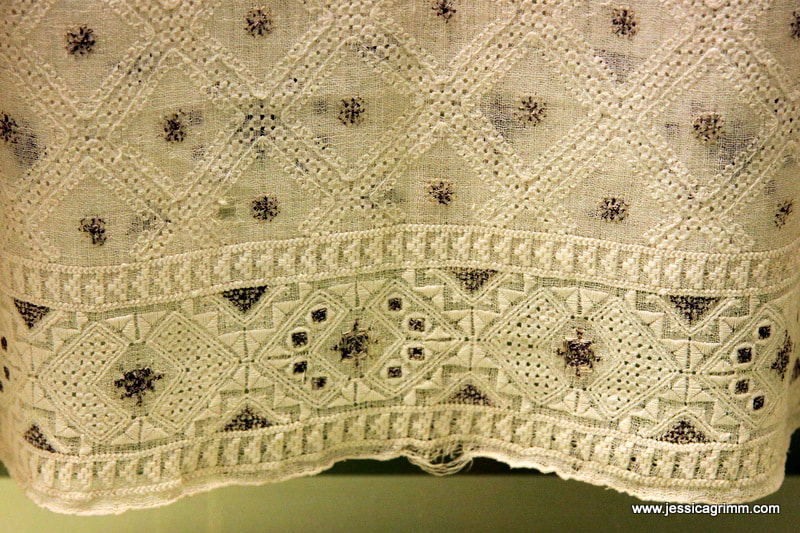
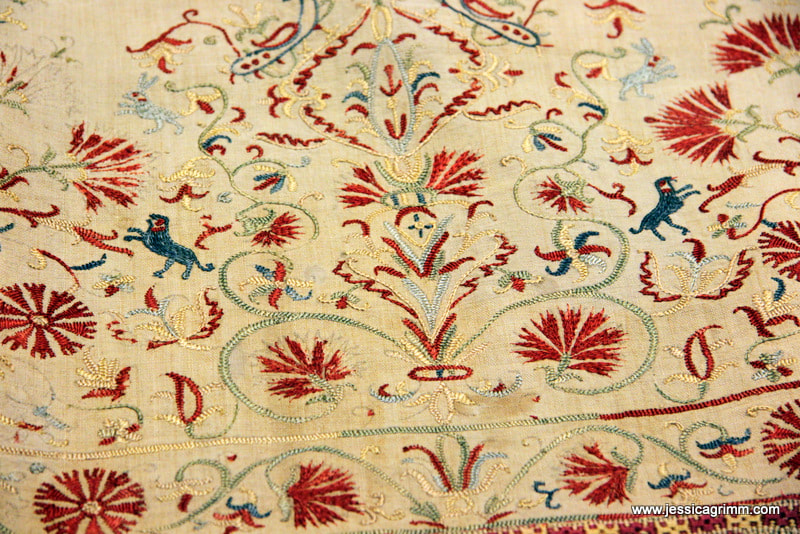
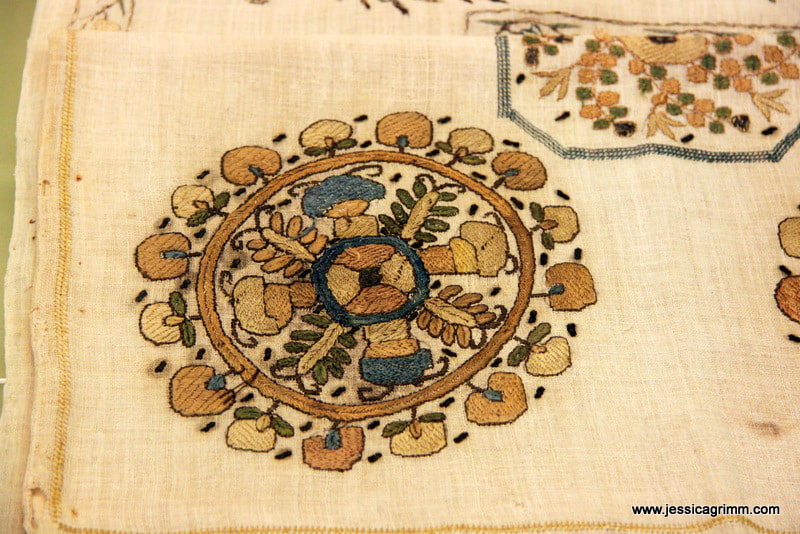
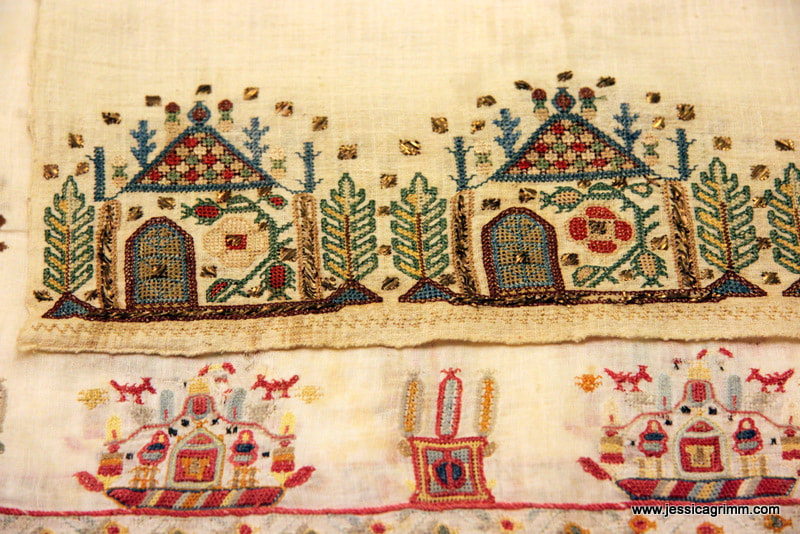
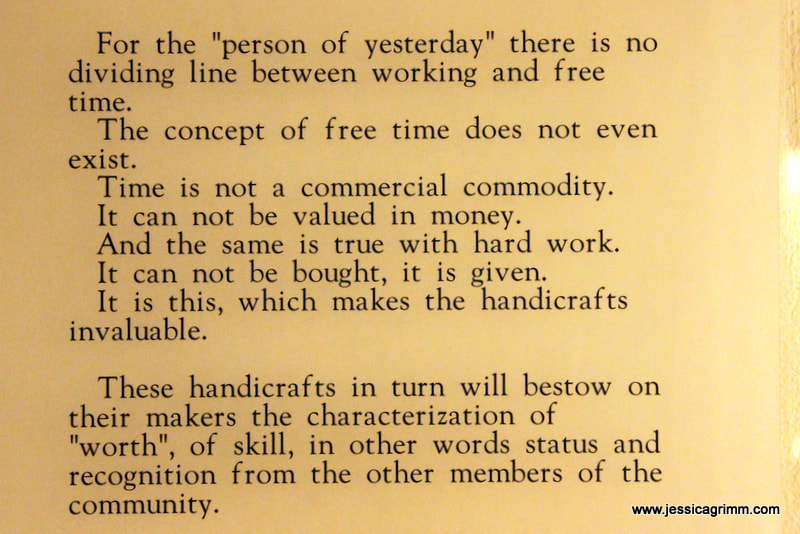
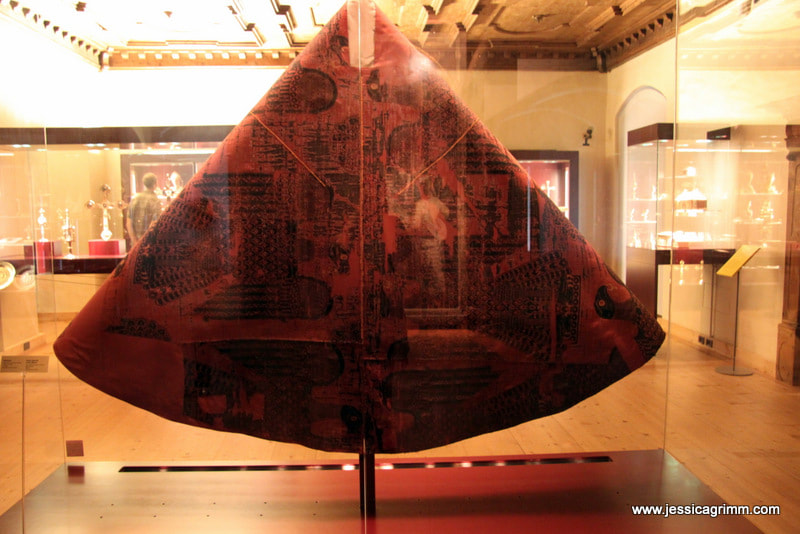
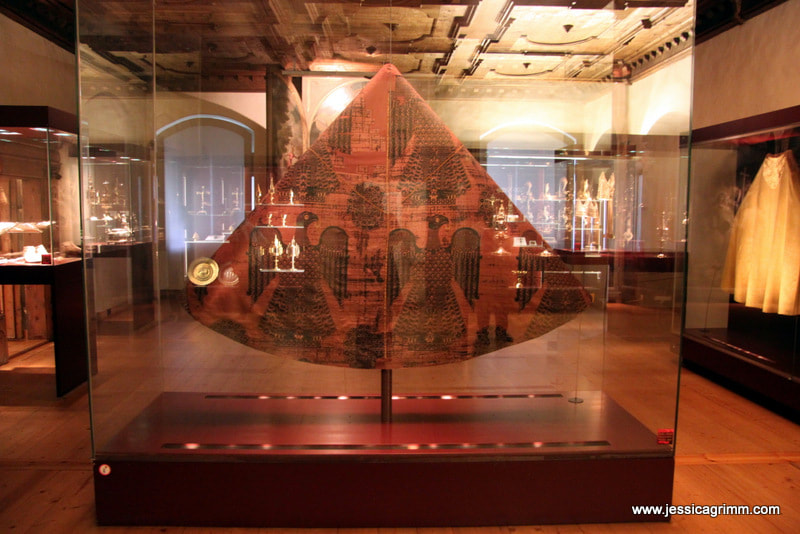
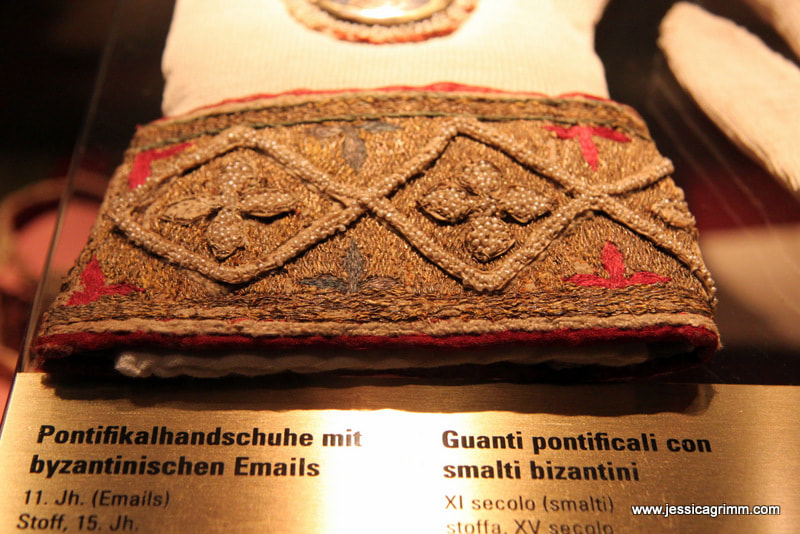
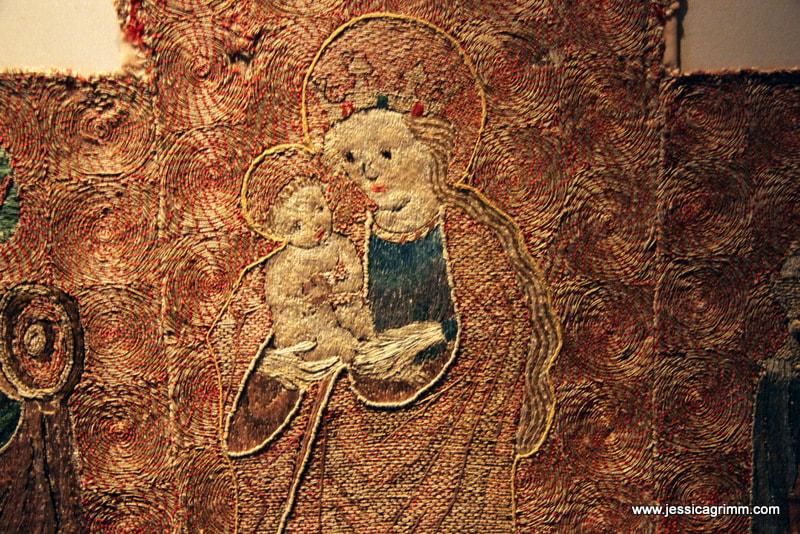
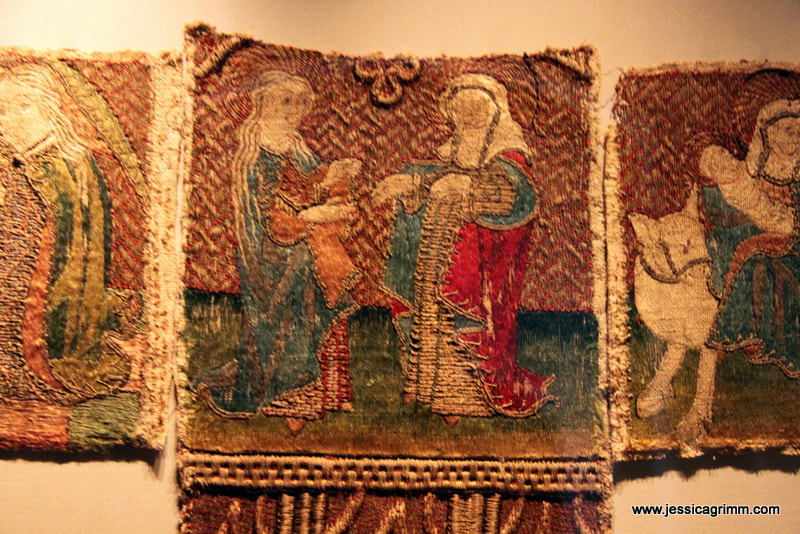
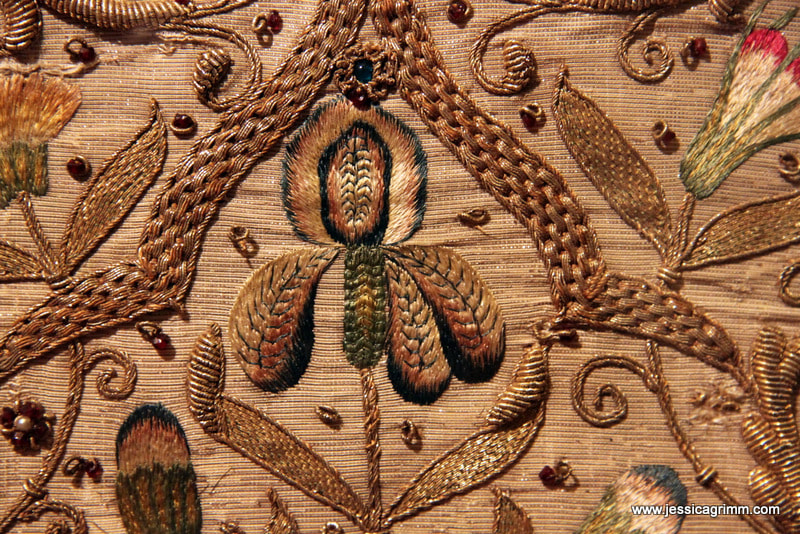
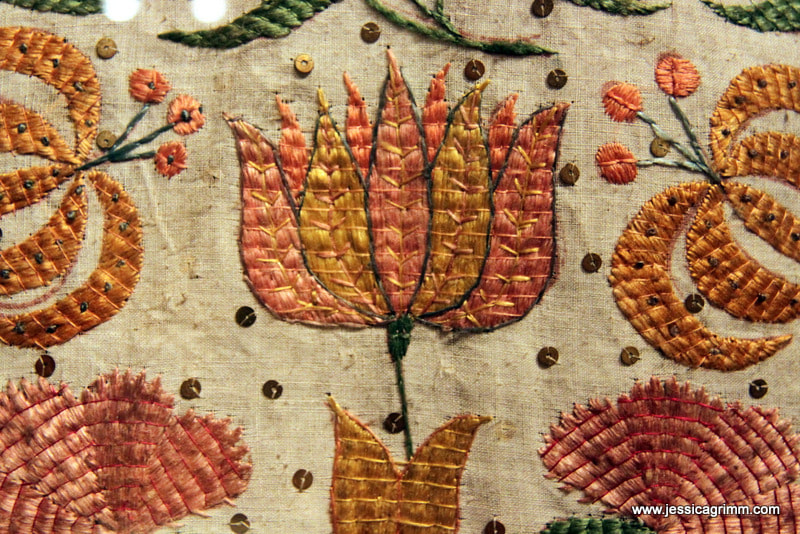
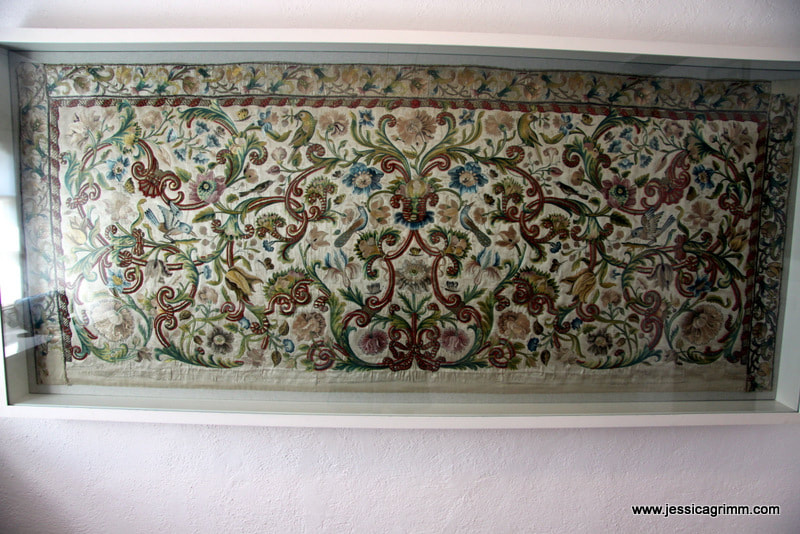
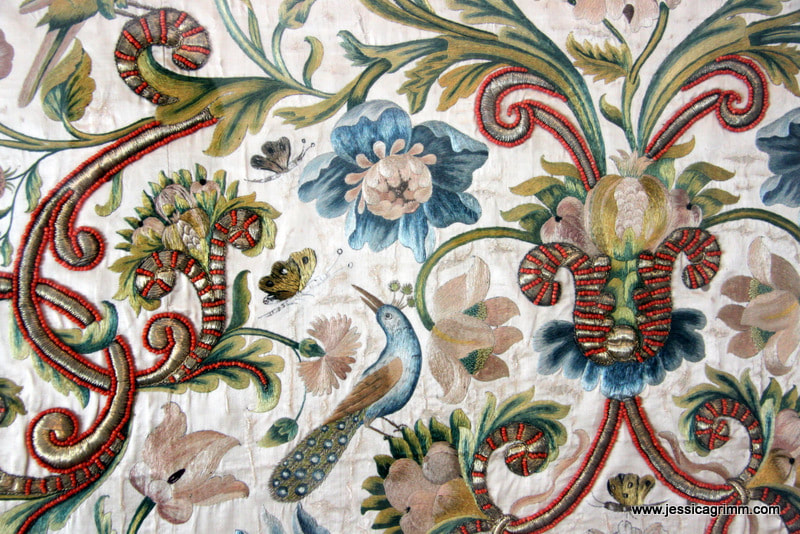
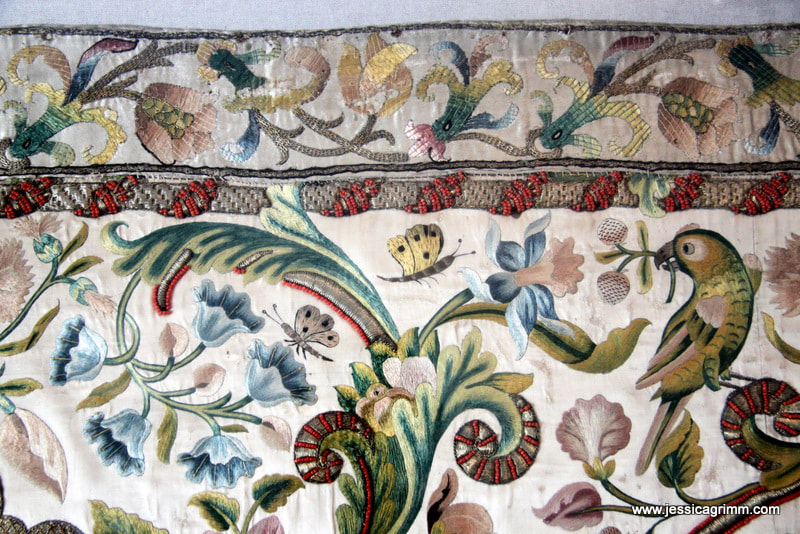
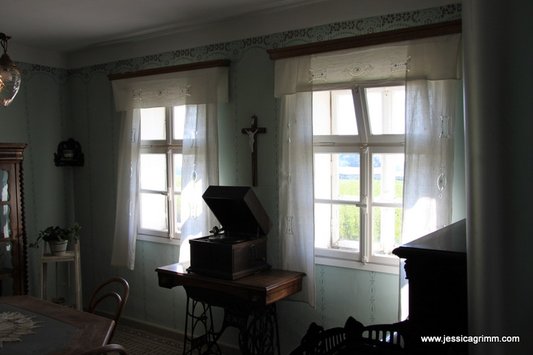
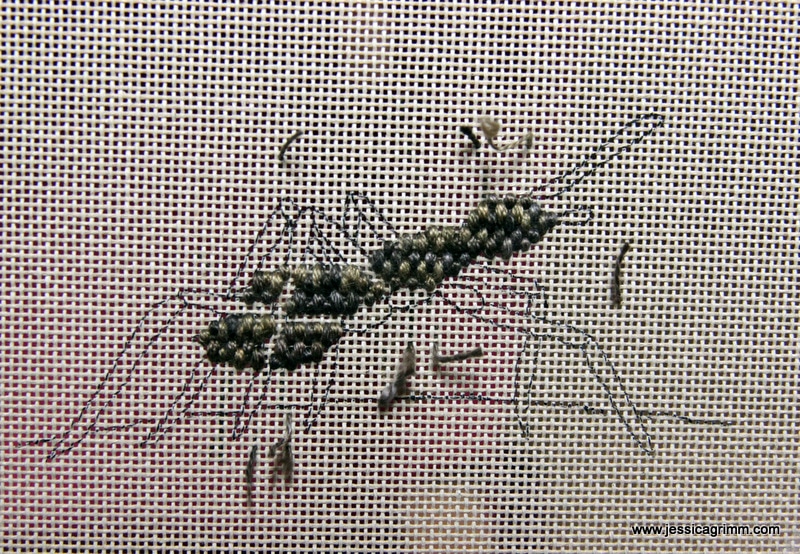
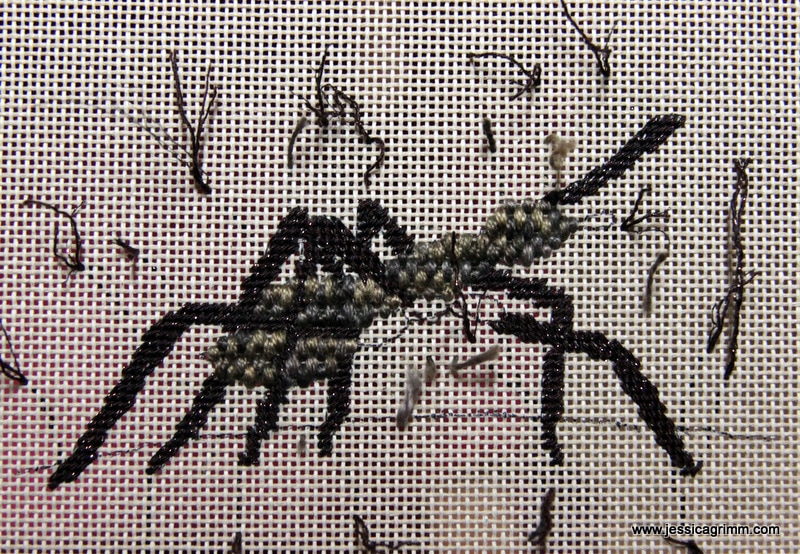
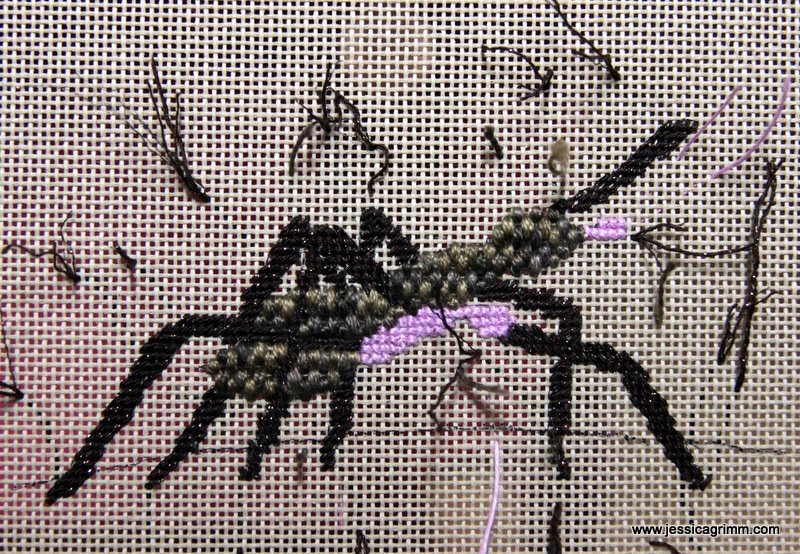
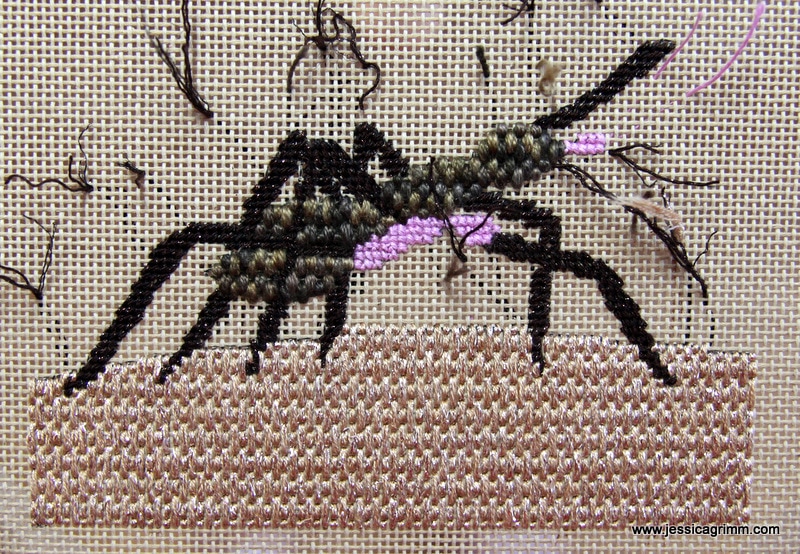
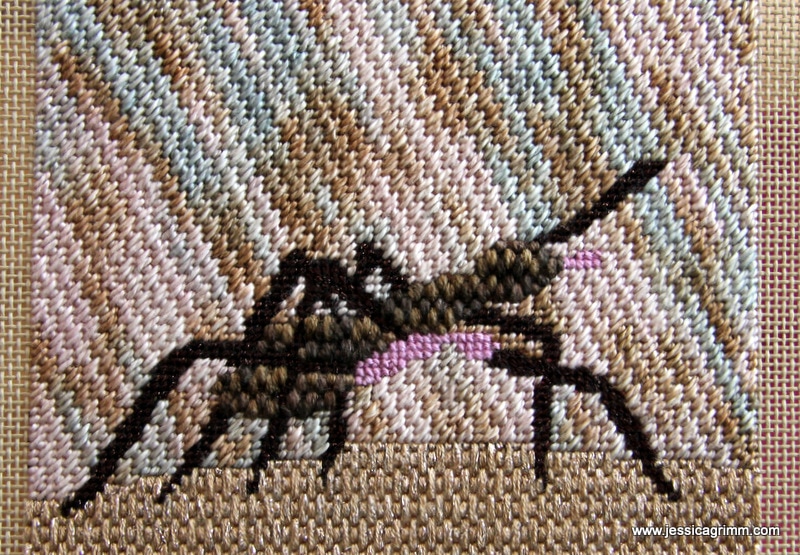
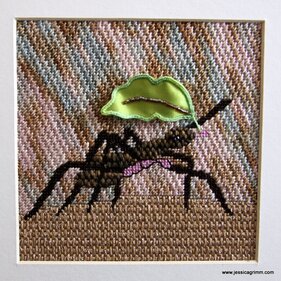
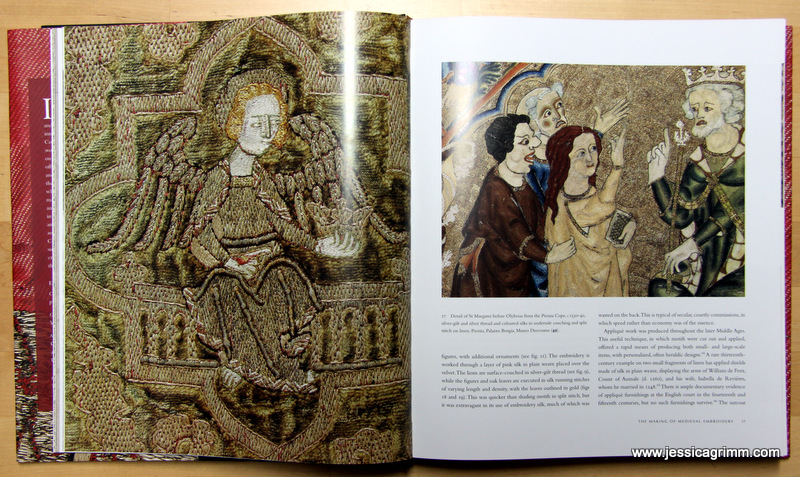
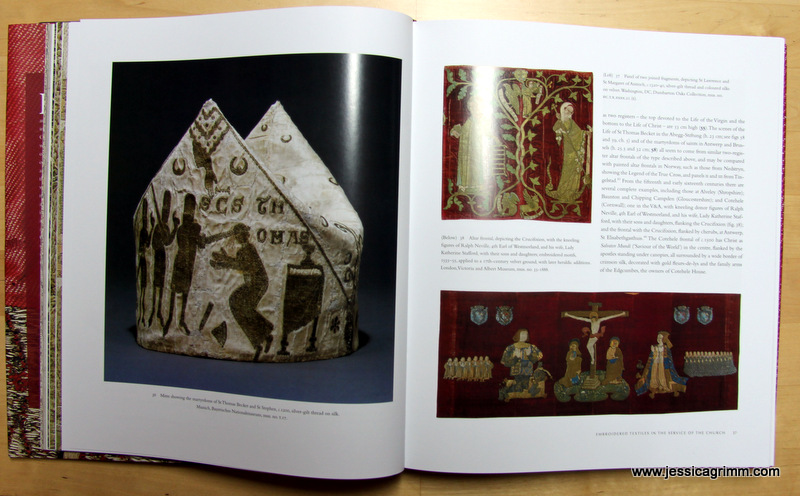
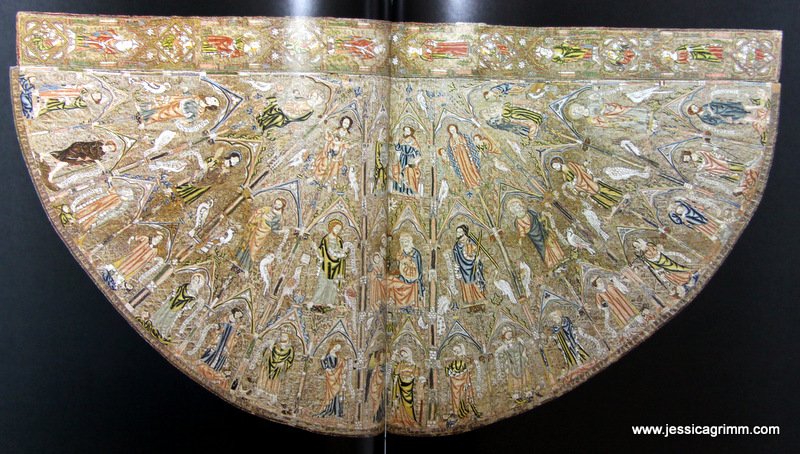
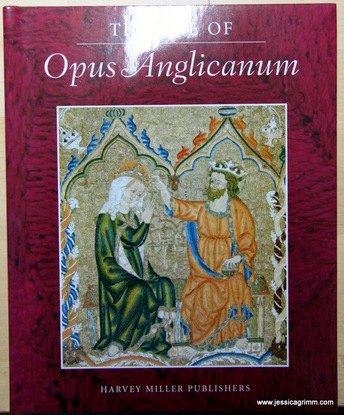
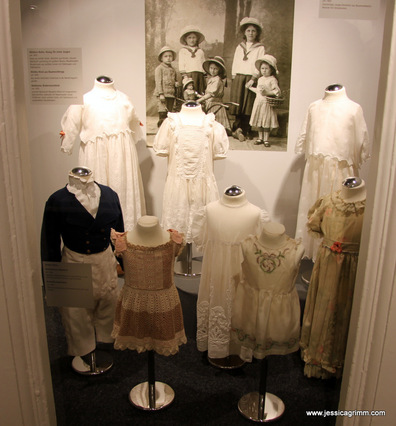
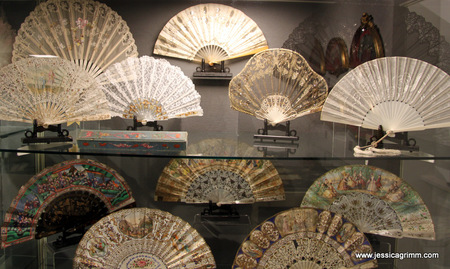
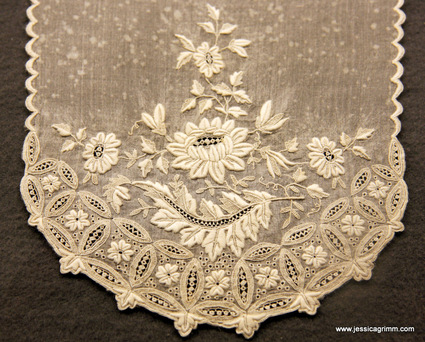
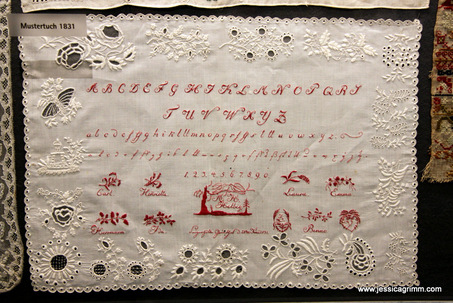
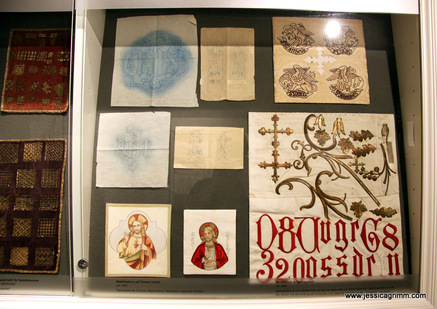
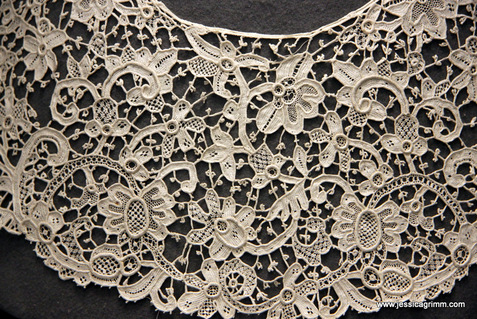
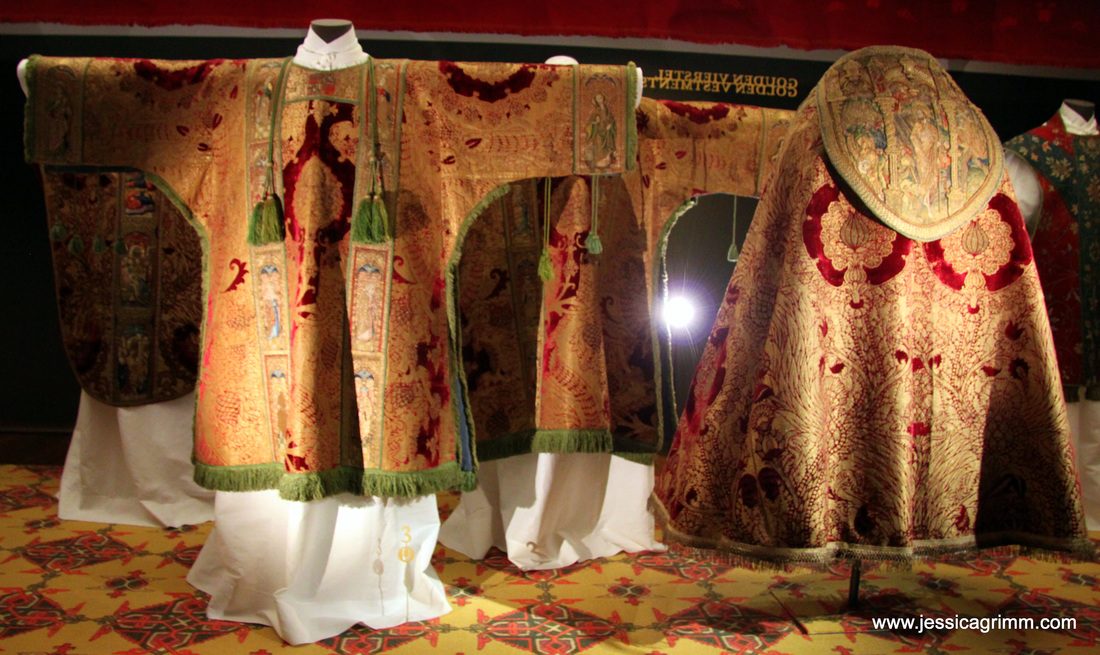
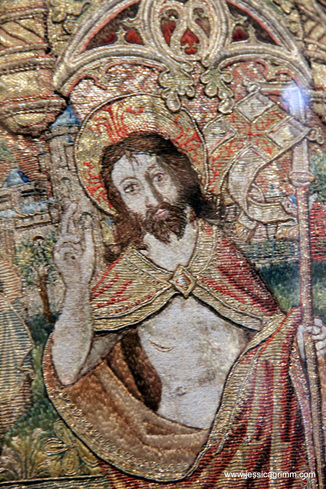
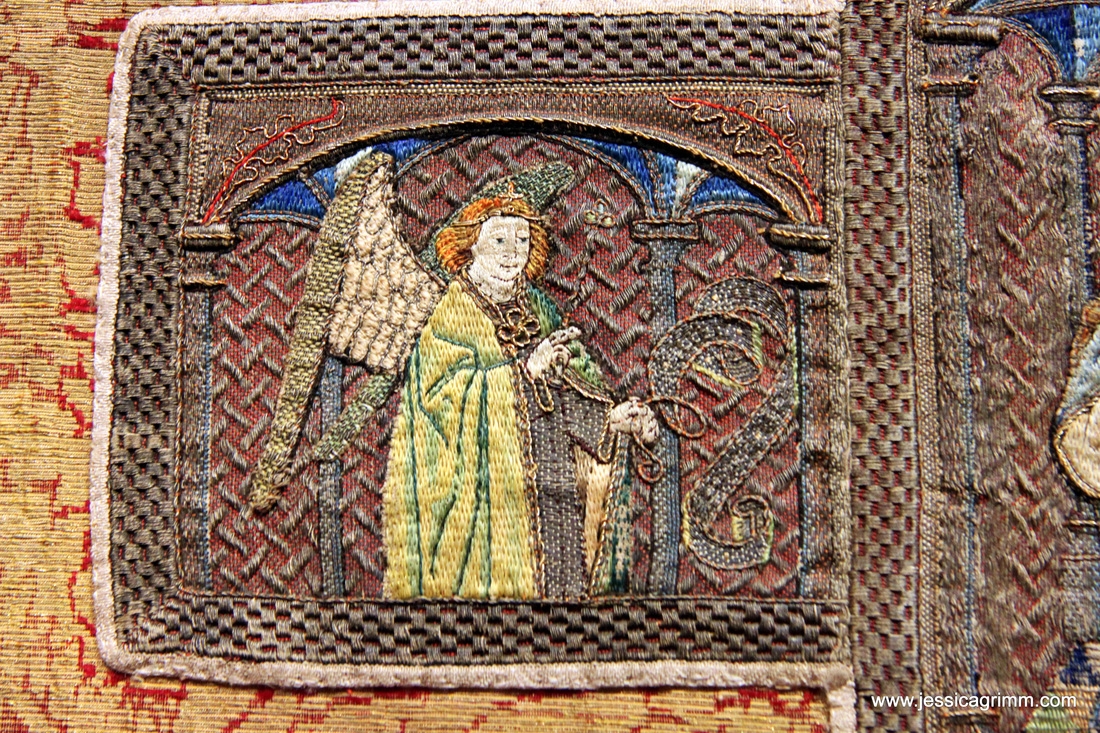





 RSS Feed
RSS Feed